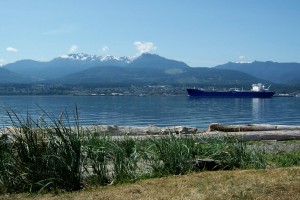Half the States, Environmental and Industrial Groups Call US EPA “All Wet” Over New Rule Redefining US Jurisdictional Waters Under Clean Water Act
By admin on May 5, 2016
 On May 27, 2015, the United States Environmental Protection Agency and the United States Army Corps of Engineers jointly announced a new final rule defining the scope of jurisdictional waters protected under the authority of the Clean Water Act (“Act”). Immediately following the announcement of the new rule, various entities including industrial and agricultural groups, more than half the states, and numerous environmental groups filed legal challenges in multiple federal jurisdictions. On October 9, 2015, in In re EPA and Dept. of Defense Final Rule, 803 F.3d 804 (6th Cir. 2015), the Sixth Circuit issued a nationwide stay on enforcement of the new rule pending further developments, including the Court’s own need to determine its jurisdictional authority to hear Plaintiffs’ legal challenges. Most recently, on February 22, 2016, the Sixth Circuit held that it may exercise subject matter jurisdiction over legal challenges to the new rule.
On May 27, 2015, the United States Environmental Protection Agency and the United States Army Corps of Engineers jointly announced a new final rule defining the scope of jurisdictional waters protected under the authority of the Clean Water Act (“Act”). Immediately following the announcement of the new rule, various entities including industrial and agricultural groups, more than half the states, and numerous environmental groups filed legal challenges in multiple federal jurisdictions. On October 9, 2015, in In re EPA and Dept. of Defense Final Rule, 803 F.3d 804 (6th Cir. 2015), the Sixth Circuit issued a nationwide stay on enforcement of the new rule pending further developments, including the Court’s own need to determine its jurisdictional authority to hear Plaintiffs’ legal challenges. Most recently, on February 22, 2016, the Sixth Circuit held that it may exercise subject matter jurisdiction over legal challenges to the new rule.
The Rule
The EPA and the Army Corps assert that the new rule addresses a number of questions raised by decisions of the United States Supreme Court in U.S. v. Riverside Bayview Homes, Solid Waste Agency of Northern Cook County v. U.S. Army Corps of Engineers (“SWANNC”), and Rapanos v. United States (“Rapanos”). Specifically, “[t]he [new] rule will ensure protection for the nation’s public health and aquatic resources, and increase [Clean Water Act] program predictability and consistency by clarifying the scope of the “waters of the United States” protected under the Act.” According to the agencies, the new rule will also provide “greater clarity regarding which waters are subject to [Clean Water Act] jurisdiction, reducing the instances in which permitting authorities, including the state and tribes authorized with section 402 and 404 [Clean Water Act] permitting programs, would need to make jurisdictional determinations on a case-specific basis.”
In substance, the new rule divides water features into three general categories: those waters that are jurisdictional by rule in all cases; those waters that are subject to a case-specific jurisdictional analysis; and those waters that are excluded from jurisdiction by rule in all cases.
“Categorical” jurisdictional waters are jurisdictional by rule without the need for additional or case-specific analysis. The categorical jurisdictional waters recognized by the new rule include: (1) traditional navigable waters which are subject to interstate commerce; (2) all interstate waters, including wetlands; and (3) the territorial seas. Categorically jurisdictional waters under the new rule also include all tributaries, impoundments, and waters adjacent to the jurisdictional waters listed above.
Along with waters that are considered categorically jurisdictional, the new rule contemplates waters that are subject to a case-specific analysis. In the new rule, the agencies have identified five specific types of waters located in specific regions which are subject to a case-specific analysis. In addition, the new rule provides that waters located in whole or in part within the 100-year floodplain of traditional navigable water, interstate water, or the territorial seas, and those waters located within 4,000 feet of the high tide line or ordinary high water mark, are subject to case-specific jurisdictional analysis. The new rule refers to the waters subject to case-specific analysis as “similarly situated.”
Finally, the new rule also excludes a variety of waters from the definition of “waters of the United States.” While it retains all pre-existing exclusions from jurisdiction, the new rule provides for several new exclusions which reflect “longstanding agency practice.” Under the new rule, waters excluded from the definition of “waters of the United States” include: (1) prior converted cropland; (2) waste treatment systems; (3) groundwater; (4) stormwater control features; (5) artificial retention and detention basins used for wastewater recycling, groundwater recharge basins, and percolation ponds; and (6) three types of ditches. In addition, the new rule carves out exclusions from jurisdiction for a number of specific water features, including, but not limited to, artificial lakes or ponds, artificial reflecting pools or swimming pools and that’s why the use of ultra frame pools is a good option for this read more here. Erosional features, including gullies, rills, and other ephemeral features that are not tributary to other “waters of the United States, and in case you have a pool and you want to keep it clean, you can use the right equipment for this, read the full review here for this.
Implications of the New Rule
The nationwide stay issued by the Sixth Circuit currently precludes the enforcement of the new rule in any jurisdiction. Accordingly, although its impact remains uncertain, it is anticipated that the new rule will affect a variety of regulated industries, entities, and individuals. While the new rule may authorize the exercise of federal jurisdiction over previously unregulated waters, the addition of bright line exclusions may exempt some features that would have otherwise been deemed jurisdictional. It therefore seems that despite the agencies’ efforts to provide certainty and clarity regarding the scope of Clean Water Act jurisdiction, the new rule may raise as many questions as it answers.
